1954-1961: Squadron Leader
By Air Force Flight Test Center History Office, Dr. James Young, Chief Historian
In 1954, Yeager returned to operational flying as he took over command of the 417th Fighter Bomber Squadron. A component of the 50th Fighter Bomber Wing, his unit was first stationed at Hahn Air Base, in Germany, and then Toul-Rosiere, in France. The squadron flew F-86H Sabres and transitioned from air defense to a tactical nuclear mission while under his command. Selected to lead the wing’s team in all the European gunnery meets, Yeager typically won top individual honors in these events and ultimately led the team to victories in the U.S. Air Forces in Europe (USAFE) championships in 1955 and 1956.
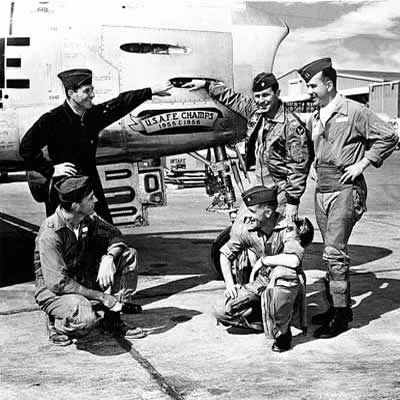
Lt. Col. Chuck Yeager and members of the 50th Fighter Bomber Wing’s gunnery team after winning their second straight USAFE gunnery competition in 1958. Wing commander Col Fred J. Ascani, standing at left.
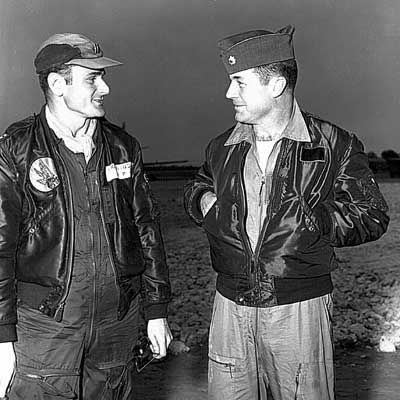
Yeager conversing with Korean War ace Capt Ralph D. “Hoot” Gibson during the 12th Air Force’s gunnery meet at Wheelus Field, Lybia, in December 1954.
Yeager may have arrived in Europe as a legendary test pilot but he has always considered himself, first and foremost, to be a fighter pilot and his dogfighting skills remained sharp. One of his squadron pilots recalled that, when he arrived, “there was a helluva line of eager young pilots anxious to jump our new squadron commander and see what he was made of. Testing Yeager turned out to be a massacre. He waxed everybody, and with such ease it was shameful. The word got around that he was somebody very special.” Yeager returned to California’s high desert when he took over command of the 1st Fighter Day Squadron at George AFB in 1957.

Yeager gave six-year old John Neumyer a chance to look over the cockpit of his F-86H at Livorno, Italy, summer of 1957.
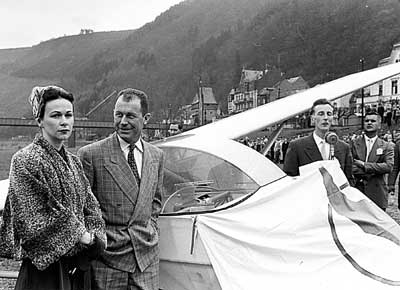
Glennis and Chuck Yeager at an event in Traben-Trauback on the Mosel River near Hahn Air Base, Germany, 1956.
Flying the new supersonic F-100 Super Sabres, the 1st was considered one of the Tactical Air Command’s (TAC) elite units. TAC was then in the process of developing inflight refueling capabilities to support long-range deployments of fighter units. Such complex operations were still very problematic. Mission aborts, navigational mistakes, communications failures and tanker rendezvous miscalculations were common. In 1958, Yeager planned and led the first flawless trans-Atlantic deployment of a jet fighter squadron in TAC history, as all of the 1st’s F-100s landed together and on schedule at Moron Air Base, Spain.
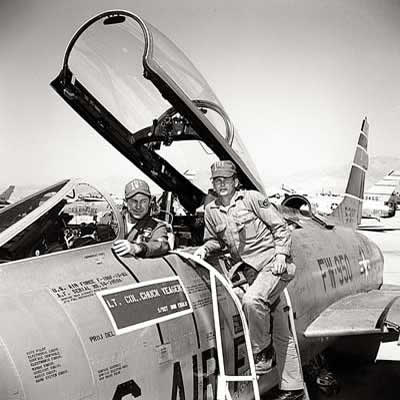
Yeager and his crew chief, Staff Sgt Bob Edwald at George AFB, 1958. Having started his career as a mechanic, Yeager believed “maintenance was at the heart of a squadron” and he gave his crew chiefs a great deal of authority.
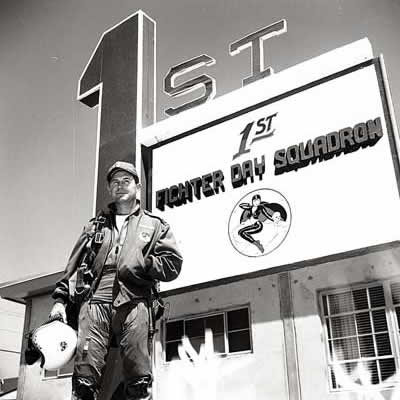
Yeager considered it a great honor to be selected to command one of TAC’s elite units. Years later, he recalled, “they were the best bunch I ever flew with and my two years with them was the most fun I had as a squadron commander.”
The unit repeated the feat when it redeployed back to George AFB four months later. And, during all subsequent deployments to Europe and the Far East, it maintained its perfect record under his command. Yeager later recalled: “I felt almost as good about that as breaking the sound barrier because a transoceanic deployment was how the TAC brass rated a squadron’s leadership and ability.”
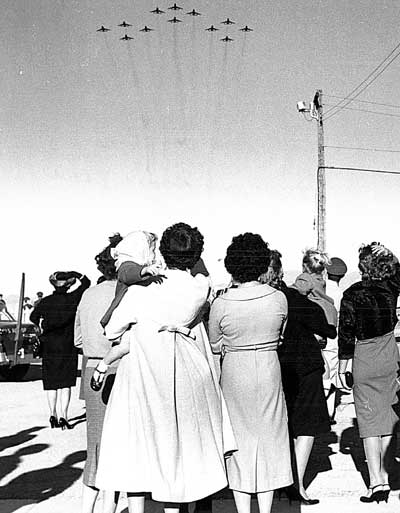
The 1st Fighter Day Squadron, in formation, returning to George AFB, CA, after its deployment to Spain, 1958.
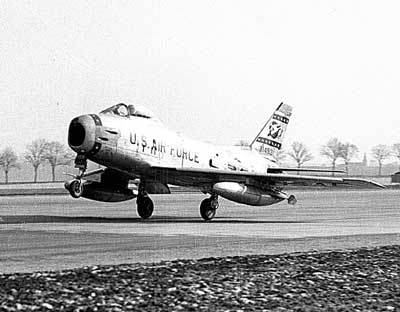
Yeager on takeoff in his F-86H at Toul-Rosiere, France, 1957.
